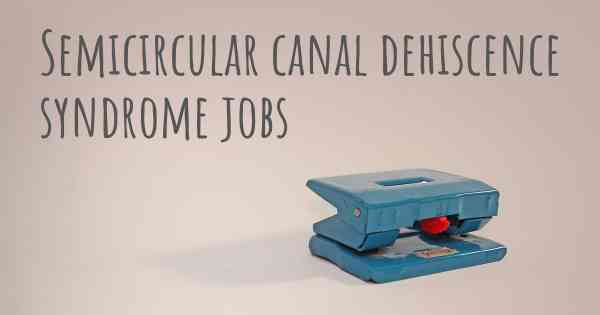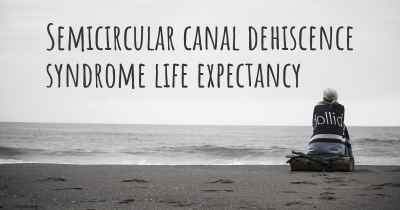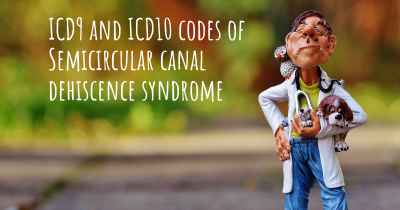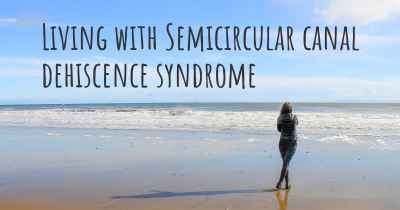Can people with Semicircular canal dehiscence syndrome work? What kind of work can they perform?
See how people with experience in Semicircular canal dehiscence syndrome give their opinion about whether people with Semicircular canal dehiscence syndrome can work and what kind of jobs are more appropriated for people with Semicircular canal dehiscence syndrome

Can people with Semicircular canal dehiscence syndrome work? What kind of work can they perform?
Semicircular canal dehiscence syndrome (SCDS) is a medical condition that affects the inner ear, specifically the semicircular canals. These canals are responsible for detecting rotational movements of the head and help maintain balance. When a person has SCDS, there is a thinning or complete absence of the bone that normally covers the semicircular canals, leading to various symptoms such as dizziness, vertigo, hearing loss, and sensitivity to certain sounds.
While SCDS can significantly impact a person's quality of life, it does not necessarily mean that they are unable to work. The ability to work with SCDS depends on the severity of the symptoms and the individual's overall health and functional abilities.
1. Accommodations and Modifications:
Individuals with SCDS may require certain accommodations or modifications in their work environment to manage their symptoms effectively. These can include:
- Reducing exposure to loud noises: People with SCDS often experience sound sensitivity, so working in a quiet or controlled noise environment can be beneficial.
- Adjusting workstations: Modifying the height or position of computer screens, chairs, or desks can help individuals maintain a more comfortable posture and reduce dizziness or vertigo.
- Flexible work hours: SCDS symptoms can fluctuate throughout the day, so having the flexibility to adjust work hours or take breaks when needed can be helpful.
- Reducing physical exertion: Some individuals with SCDS may experience balance issues or dizziness with certain physical activities. Adjusting job responsibilities to minimize physical exertion may be necessary.
2. Sedentary or Desk-based Jobs:
Many individuals with SCDS can perform sedentary or desk-based jobs without significant difficulty. These jobs typically involve minimal physical exertion and allow individuals to control their environment to some extent. Examples of such jobs include:
- Office work: Administrative tasks, data entry, customer service, or other desk-based roles can be suitable for individuals with SCDS.
- Writing and editing: Jobs that involve writing, editing, or content creation can be performed with minimal physical strain.
- Research and analysis: Individuals with SCDS can excel in jobs that require research, data analysis, or critical thinking skills.
- Graphic design or programming: Creative or technical roles that involve working on a computer can be well-suited for individuals with SCDS.
3. Remote or Flexible Work:
With the increasing availability of remote work options, individuals with SCDS can benefit from the flexibility to work from home or choose their work environment. Remote work allows individuals to control their surroundings, reduce exposure to triggers, and manage their symptoms more effectively. This can open up a wider range of job opportunities, including:
- Freelancing or consulting: Many freelance or consulting roles can be performed remotely, providing individuals with SCDS the flexibility to work on their own terms.
- Virtual assistance: Providing virtual administrative or support services can be a suitable option for individuals with SCDS.
- Online tutoring or teaching: Sharing knowledge and expertise through online platforms can be a fulfilling and flexible career choice.
- E-commerce or online business: Starting an online business or selling products/services through e-commerce platforms can provide individuals with SCDS the freedom to work at their own pace.
4. Career Counseling and Support:
It is important for individuals with SCDS to seek career counseling and support to explore suitable job options based on their abilities, interests, and limitations. Vocational rehabilitation services or disability employment agencies can provide guidance and assistance in finding appropriate employment opportunities.
Conclusion:
While Semicircular canal dehiscence syndrome (SCDS) can present challenges, it does not necessarily prevent individuals from working. With appropriate accommodations, modifications, and job choices, individuals with SCDS can pursue fulfilling careers in various fields. It is crucial for individuals with SCDS to consult with healthcare professionals, vocational counselors, and support networks to identify the most suitable work options and strategies to manage their symptoms effectively.








